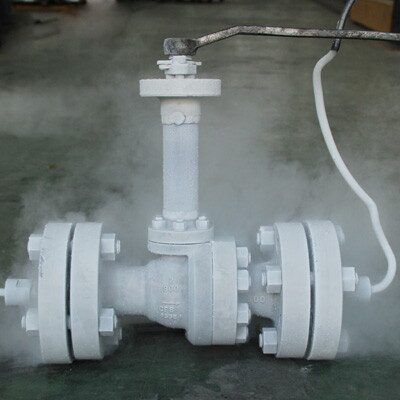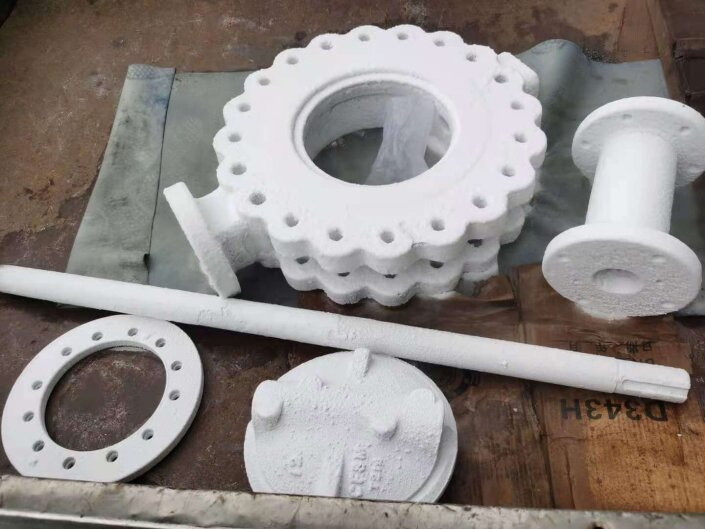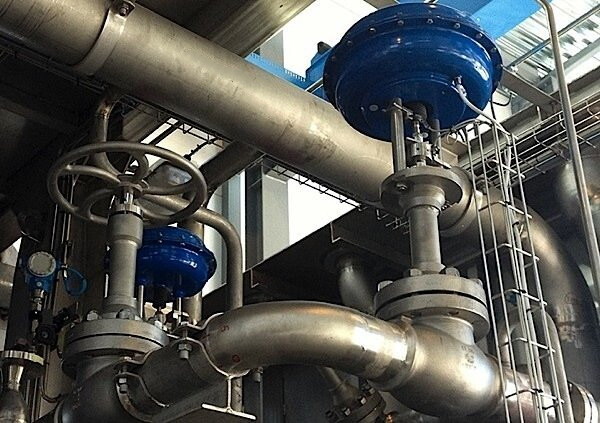Pipelines and valves are frequently used in the transmission of cryogenic liquids and gases in the chemical and LNG (liquefied natural gas) sectors. These are a few uses for cryogenic valves. Cryogenic valves are specifically engineered valves intended for use in such circumstances. These valves need to be made of materials that can survive these extremely low temperatures because the term "cryogenic" refers to materials and fluids that are handled below -101°C, or -239°F.
Not all cryogenic valves are designed to function properly in extremely cold temperatures; cryogenic valves can also manage high-pressure fluids. Fluids with temperatures as low as -320°F and pressures as high as 750 psi (pound per square inch) can often be handled by a cryogenic valve.

There are various differences between conventional valves used in normal temperature conditions and cryogenic valves. Here are a handful mentioned:
- The temperature range that cryogenic valves can withstand is 37°C to -320°F. Every valve has a different temperature range.
- Long stems are typically used in the design of cryogenic valves. The reason for this is that the cold fluid should not come into contact with the valve stem seal.
- Excellent bubble-tight shutdown features on cryogenic valves ensure that leaks be avoided at all costs. Since these valves and pipes carry hazardous substances, leaks might have disastrous consequences.
- Specifically, the chemical, LNG, CNG, and other oil and gas sectors use cryogenic valves.
- These valves are lighter in comparison to normal valves. They must also be devoid of lubricant and immaculate.
Liquified natural gas, liquified petroleum, liquid oxygen, and liquid hydrogen are examples of cryogenic liquids and gases that are stored and transported via cryogenic valves. A cryogenic valve's operation is partially reliant on the outside pressure. The closed position is the typical state in which a cryogenic valve is kept. By doing this, you may make sure that the media inside the valve stays there and doesn't leak into the surrounding air.
These valves are skillfully made to respond to an increase in pressure. The media flows as a result of the valve being forced into the open position by increasing pressure. This flow will keep going until the pressure starts to drop.
The materials used to make cryogenic valves include LCB, LC3, CF8, and other unique materials. The valve's material will be selected based on the temperature range it can tolerate. If the valve is not made of a suitable material, the design will result in cracks, leaks both inside and outside, and other serious problems.
The elongated stem is the primary feature of the cryogenic valve's design that sets it apart from an industrial valve. This stem's purpose is to protect the packing gland from outside heat when the temperature rises over 0°C. The stem also prevents freezing of the components above the valve bonnet.
These valves' exceptional sealing qualities are a result of the media they hold. Since many compounds ignite at greater temperatures, a cryogenic valve leak of some substances could have disastrous consequences.
Furthermore, a significant concern regarding the temperature increase in valves is the occurrence of gasification. A blast in the pipeline can occur if the fluids inside a cryogenic valve gasify, increasing the fluid's volume by ten or even hundreds of times.
A cryogenic valve that is not developed in accordance with standards is likely to provide a very high danger. Cryogenic valves are always susceptible to a variety of conditions, such as external heat, pressure, and other hazards, hence it is critical that these valves are constructed of high-grade materials.
Cryogenic valve standards and codes include ASME B16.34, ISO 28921-1, MSS SP-134, BS 6364, and ISO 28921-1.
Standard valves are not always suitable for use as cryogenic valves. Cryogenic valves are often ball, butterfly, globe, and relief valves. Additionally, quarter-turn valves are preferred due to their appropriate shut-off capacity.
The ball valve, a member of the quarter-turn valve family, is an excellent option for the storage and transportation of cryogenic fluids. This is a result of the valve's superior shut-off quality and outstanding flow characteristics.


- Cryogenic Globe Valves
Cryogenic valves are mostly used in the oil and gas business, although they are also used in other industries and sectors. The following are some typical uses for cryogenic valves:
- LNG Plants and Terminals: Due to the significant risk of vaporization and expansion under pressure, LNG can only be delivered efficiently using cryogenic pipes and valves. The appropriate kind of cryogenic valve can be selected based on the requirements.
- Food and beverage industries: Cryogenic valves are widely used in plants that produce processed foods and drinks. Using cryogenic pipelines and valves, these things are moved into and out of a freezer.
- Chemical and Petrochemical industries: Liquified gases and other chemicals must be transported in these sectors. Cryogenic valves assist with this.
- Aerospace Storage: Cryogenic valves are frequently found in the aerospace industry, where they are employed in turbines and constructions.
- Medical Industry:Cryogenic valve applications are constantly growing, and the medical field is one of their uses. They are present in storage areas that hold medical equipment as well as pipelines that carry gases like oxygen.
- Plants for Air Separation - Several pressure techniques are used to separate the various gases in the air. These factories are perfect places to use cryogenic valves.

Cryogenic valves have a wide range of applications since they are ideal for a variety of sectors and industries due to their ability to handle fluids at very low temperatures and high pressures.
It's critical to consider the materials a cryogenic valve manufacturer uses in the production of their valves.
Speak with us right now to select the ideal cryogenic solution for your requirements.
